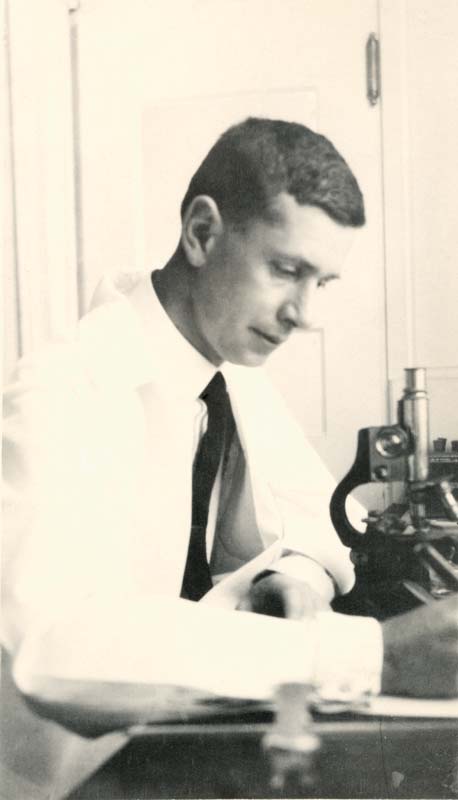
Thomas Addis, one of the most prominent students of the kidney during the first half of the twentieth century, was born in Edinburgh in 1881.1-3 Recruited by Stanford Medical School University in 1911, he spent almost his entire academic life there. After a brief interest in hemophilia and bilirubin metabolism, he switched to the study of renal diseases, “mixing patients and rats” as he once put it, and even seeing his patients in his research laboratory.1
He lived before the advent of kidney biopsy, when physicians had to rely for diagnosis largely on clinical findings. He was particularly committed to a detailed examination of the patient’s urine, conducting its examination himself, and even recommending that the patient be present when he performed the urinalysis. He is famously remembered for saying that “the patient’s kidneys belong to the pathologist after his death, but the urine was available to the nephrologist during his life.”
Aging nephrologists may remember from their youth something called the Addis count. It consisted of counting the white and red cells, as well as the casts, in a timed specimen of urine. This later became regarded as particularly useful in the diagnosis of so-called chronic pyelonephritis and was modified by shortening the collection time or making it into a provocative test by injecting typhoid vaccine or, less dauntingly, cortisone in order to stimulate the release of leukocytes from the presumably chronically infected kidney. For the same purpose other investigators developed special staining techniques to distinguish white cells from tubular cells, such as the Sternheimer stain.
The history of the many attempts to classify the various forms of glomerulonephritis in the absence of evidence obtained from kidney biopsy has been discussed elsewhere in this Section.4 Thomas Addis formulated his own scheme, designed specifically for use by the practicing physician. He preferred to continue using the term Bright’s disease, and in his classical monograph “Glomerular Nephritis” he envisaged three major subdivisions: hemorrhagic, degenerative, and arteriosclerotic. He divided the hemorrhagic form into several groups depending on the stage of progression of the disease. Degenerative disease was diagnosed by the predominance of epithelial or white cells in the urine, and perhaps included various forms of the nephrotic syndrome or even amyloidosis. He regarded his arteriosclerotic form as not being diagnosable by his careful analysis of the urine, but presciently wrote that it was the most important and common: it presumably included nephrosclerosis and the effects of benign or malignant hypertension on the kidney.1 The effects of hypertension on the kidney were just being recognized at the beginning of his career, a time when most doctors only measured the systolic blood pressure. In many respects his comment that “all we know for certain about the kidney is that it makes urine” definitely applied to that period.
Yet it was a heady period for the study of renal physiology, aided by the ability at the beginning of the century to measure blood urea and serum creatinine. Much of the interest of renal investigators centered on trying to refine the evaluation of renal function by dividing the amount of solute excreted in the urine by that retained in the blood. This began with the complex formulation by Leon Ambard in France1 and was followed later by the use of creatinine in the same manner and by the realization that this calculation also represented the glomerular filtration rate (GFR). This measurement remains entrenched in nephrology orthodoxy to this day and is perhaps useful as an overly exact method to calculate the dose of medications to be administered to elderly people. But Thomas Addis relied principally on the serum creatinine: several decades later Dr. Willem Kolff, while building his first disposable artificial kidney, unfashionably also declared that he never learned anything from a clearance that he did not know from the serum creatinine; and this author would also suggest that the use of GFR has led to much unnecessary investigation and some premature dialysis in patients with low serum creatinine levels.
As hemodialysis and renal transplantation were not available in the 1940s, Addis increasingly focused in his research on dietary measures and particularly protein restriction, becoming an advocate of its use to ward off the symptoms of uremia. He never abandoned clinical medicine.1-3 At the height of his research endeavors he was still seeing patients at least three times a week and following them carefully, attentive not only to the clinical evolution of their disease but also to their work and home life.1 By 1944 he wrote that he had become “less scientific and more doctorish,” and was worried about the excess suffusion of physiology into clinical medicine.1
During the McCarthy era of 1948 he appears to have run into trouble with the authorities at Stanford for his “amateur revolutionary” socialist left-wing leanings.1 He was a man with his heart in the right place, a successful laboratory investigator, who, however, put clinical medicine first. He is deservedly remembered as one of the great pioneers of nephrology at a time when so little was known about the kidney and so little could be done to help the patient.
Further recommended reading:
- Peitzman SJ. Thomas Addis (1881-1949): Mixing patients, rats, and politics. Kidney Int 1990; 37: 833.
- Piccoli GB. Patient-based continuum of care in nephrology: why read Thomas Addis’ “Glomerular Nephritis” in 2010 J Nephrol2010; 23:164.
- Blagg CR. Thomas Addis, 1881-1949, clinical scientist, hematologist and pioneering nephrologist: a brief biography. J Nephrol2009; Suppl 14:115.
- Dunea G. History of nephrology, the modern era. Hektoen International, Nephrology Section.

Leave a Reply